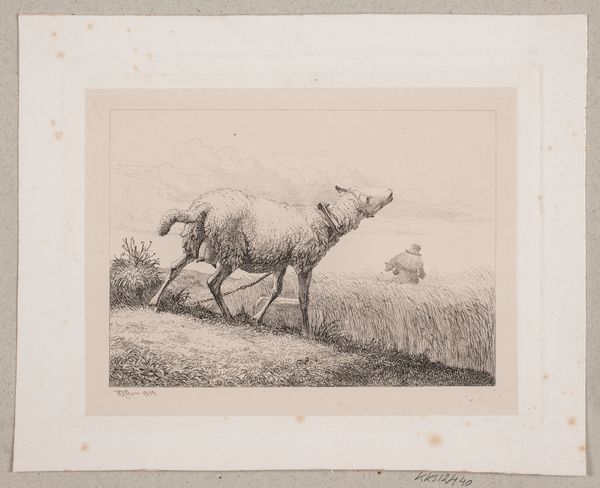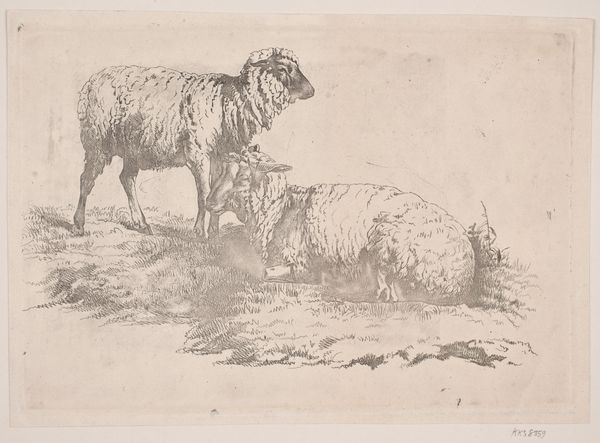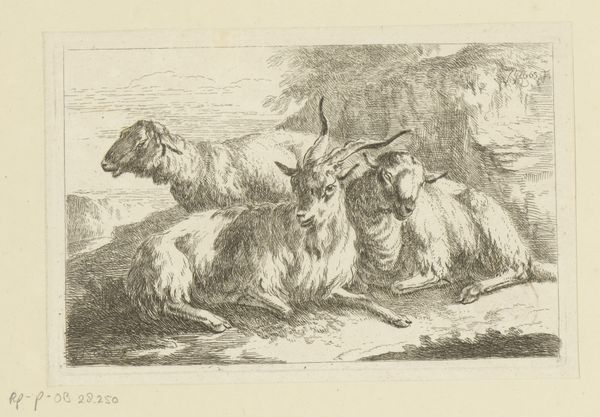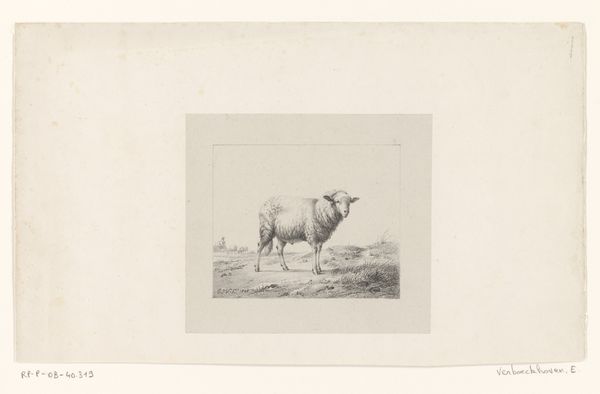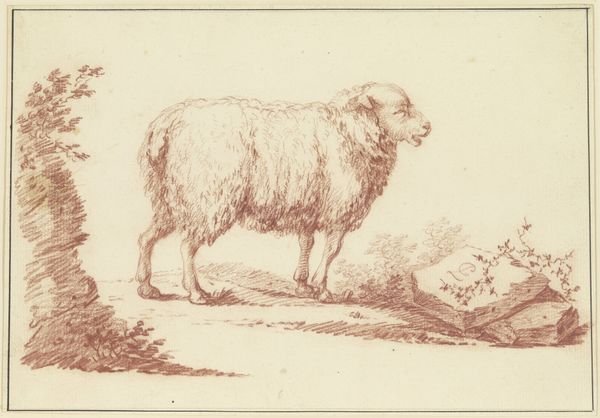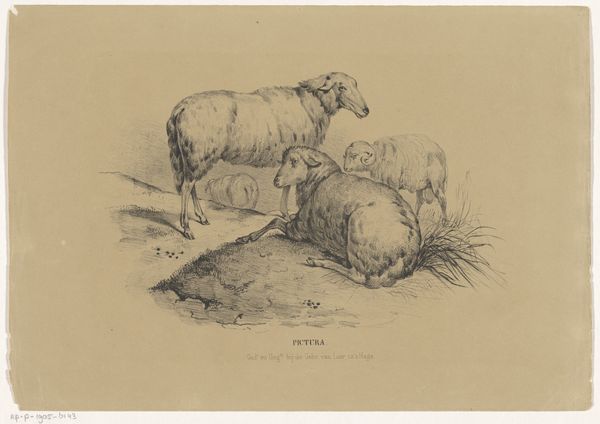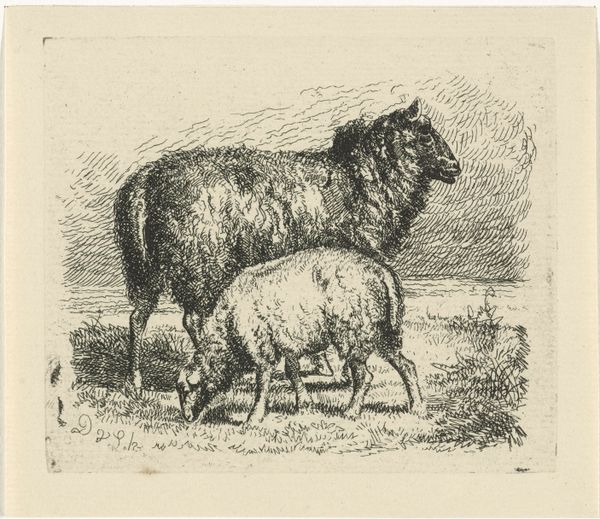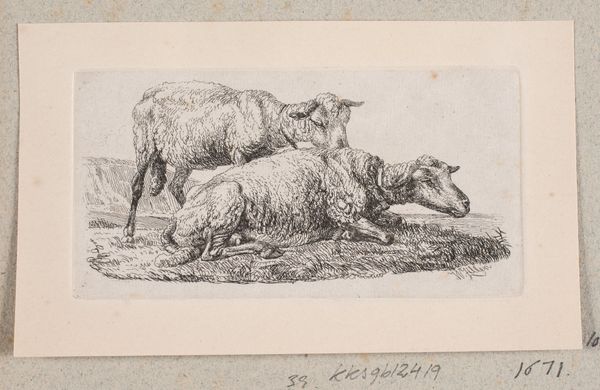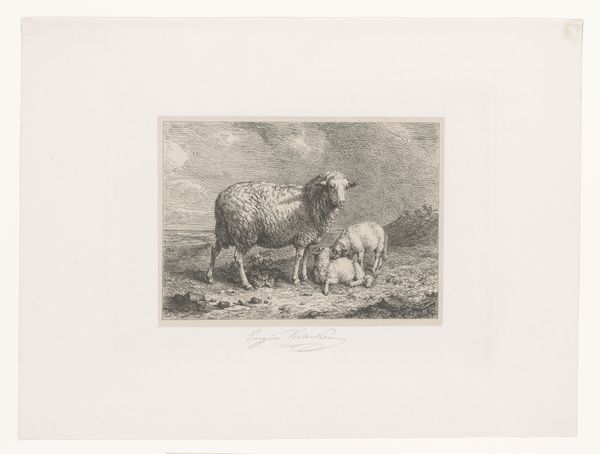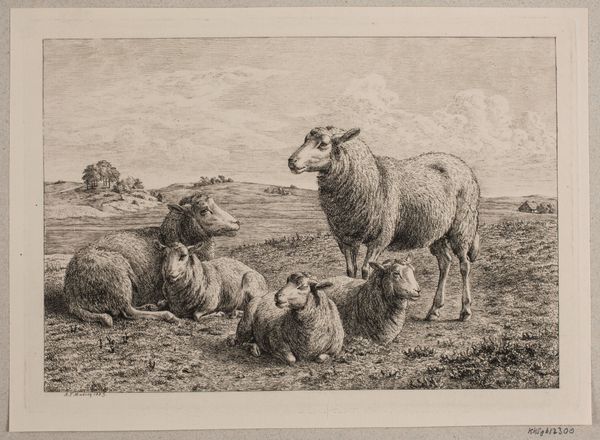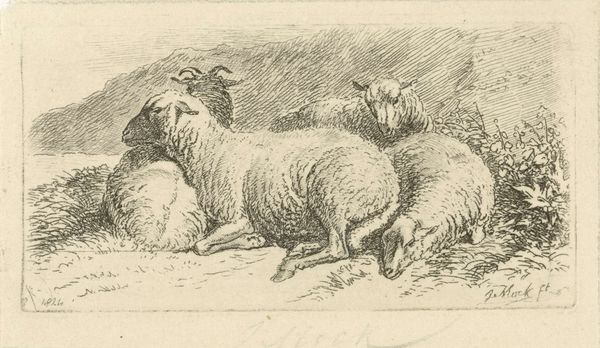
print, etching
#
animal
# print
#
etching
#
landscape
#
genre-painting
#
realism
Dimensions: height 84 mm, width 133 mm
Copyright: Rijks Museum: Open Domain
Editor: This etching, "Twee schapen in een weide met hekwerk," by Louis Robbe, dating from 1816 to 1887, depicts two sheep in a field. I find the scene very tranquil. What stands out to you about this work? Curator: Tranquility, yes, but also consider what rural scenes like this were meant to represent. In the 19th century, the romantic idealization of rural life often masked the harsh realities faced by agrarian communities. Does this etching reinforce a comforting narrative, or does it offer a subtle commentary on the relationship between humans, animals, and land ownership? How might ideas of labor and economic disparities filter into the representation of these sheep? Editor: So you're saying the simplicity of the image might be deceptive, hiding complex social issues? I hadn't considered it in terms of labor, or land ownership... Curator: Exactly. The presence of the fence, for instance, speaks to boundaries, enclosure, and control. Consider the implications of depicting animals within a contained space. How might this relate to broader conversations about freedom, confinement, and the commodification of nature, especially viewed through the lens of gender, race, and class dynamics? The sheep themselves—their wool, their meat—were valuable resources. Who benefited from those resources, and at whose expense? Editor: That definitely changes my perspective. I was seeing pastoral beauty, but now I see a loaded scene with potential for discussing exploitation. Curator: It's about critically examining what we’ve been taught to value and whose stories get told, or, in this case, etched into history. The romanticization of nature often occludes the complex realities of lived experience. Editor: I see what you mean. Thanks to this conversation, I feel like I'm not only looking at art but also looking *through* it.
Comments
No comments
Be the first to comment and join the conversation on the ultimate creative platform.

